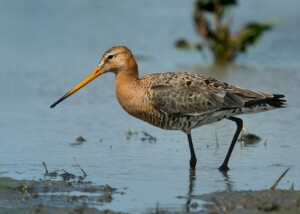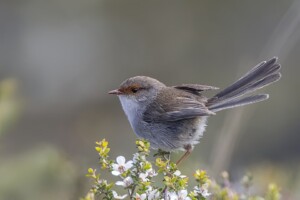Editor’s picks
READERS Current issue | All issues || AUTHORS Submit a paper | Author guidelines
Highlights from the latest issue
July 2025 | Vol. 167, issue 3
We’re pleased to deliver the third issue of 2025, full of reviews, original articles, short communications and forum articles. Here, Editor in Chief, Jenny Gill, has selected four of her highlights.
- REVIEW ARTICLE
Pollen analysis as a tool to advance avian research and inform conservation strategies
Anne E. Goodenough & Julia C. Webb
Birds can often capture and transport pollen grains as they go about their daily lives, both internally and externally, on feathers, bills and skin crevices. These grains have potential to reveal much about the diet, habitat use, distribution and migration of the individuals carrying them, and the environments that they have experienced. In this review paper, Goodenough and Webb present the findings of an extensive literature review of the knowledge gained from studying the pollen grains carried by birds, and the potential range of topics that could be addressed in the future, including contributions to pollination and opportunities for reconstruction of environments from pollen grains captured and preserved in guano deposits.
View
- ORIGINAL ARTICLE
Using age-ratios to investigate the status of two Siberian Phylloscopus species in Europe
Paul Dufour, Magnus Hellström, Christophe de Franceschi, Marc Illa, Gabriel Norevik, Paul Cuchot, Stephan Tillo, Mark Bolton, David Parnaby, Alex Penn, Vincent van der Spek, Peter de Knijff, VRS Castricum, Sophie Damian-Picollet, Willy Raitiere, Sebastien Lavergne, Pierre-Andre Crochet, Paul Doniol-Valcroze
Migratory ranges are constantly being shaped by the frequency of individuals undertaking different migratory routes and their success at surviving to repeat the journey in subsequent years. Vagrant birds that migrate to areas outwith the current species’ range could be a source of range development if they survive, return to their breeding grounds, and are joined by others when they return to the novel winter area. Can we tell when birds outwith their current range are vagrant or migratory? In this article, Dufour and colleagues hypothesise that vagrant populations should comprise juveniles that are using the route for the first (and only) time, while migratory populations should contain adults. Using ringing data, they show almost all Yellow-browed warblers caught in Europe are juveniles, suggesting that the many thousands of individuals that now travel west each year are vagrants with no sign (yet) of new migratory routes being established.
View
- SHORT COMMUNICATION
Genetic diversity and the implications of captive rearing for a small population of Black‐tailed Godwits
Jennifer Smart, Yvonne I. Verkuil, Krijn B. Trimbos, Nicola C. Dessi, Rebecca Lewis
In small populations, genetic diversity can often decline, particularly if some individuals have consistently higher breeding success and contribute more offspring to the population. For threatened populations supported by headstarting (captive rearing of young birds hatched from eggs collected in the wild and released after the vulnerable pre-fledging period), these effects could be exacerbated if the eggs collected and/or those that hatch successfully are repeatedly from the same females. In this Short Communication, Smart and colleagues explore this issue in the tiny UK breeding population of Black-tailed Godwits, which headstarting has successfully boosted in recent years. Genetic sampling of this population shows that, while the relatedness of birds is higher than in the much larger population breeding in the Netherlands, reductions in levels of genetic variation are not yet evident. The authors suggest measures to counteract such effects should they arise in the future.
View
- FORUM
A focus on females can improve science and conservation
Joanna X. Wu, Martha A. Harbison, Stephanie Beilke, Purbita Saha, Brooke L. Bateman
Differences between males and females are common in birds. In morphology, demography, behaviour, ecology and many other areas, sex differences exist in many species. In this Forum article, Wu and colleagues argue that many ornithological studies fail to consider these sex differences, and presume that information captured for males is representative of whole populations or species. The authors describe a suite of research fields in which females are under-reported, and consider the implications of this data bias. Eight very helpful recommendations for improving data collection on female birds are presented, together with a suite of topics with important sex differences and associated research questions that will hopefully be addressed in the coming years.
View
Other items
Book reviews
Obituary: Peter J. Jones
Obituary: James John Maitland Flegg
Obituary: Mike Harris
Godman Salvin Prize: Professor R. W. Furness
View all papers in this issue
Sign up for content e-alerts
Image credits
From top:
Tui with flax pollen | Tony Wills CC BY-SA 3.0 Wikimedia Commons
Yellow-browed Warbler | Frank Vassen CC BY 2.0 Wikimedia Commons
Black-tailed Godwit | Frank Vassen CC BY 2.0 Wikimedia Commons
Superb Fairywren | Charles J. Sharp CC BY-SA 4.0 Wikimedia Commons



